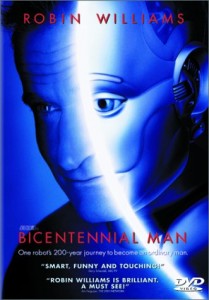Artificial Intelligence
In Chapter 20, there is a section that discusses artificial intelligence: “a special branch of computer science that investigates the extent to which the mental powers of human beings can be captured by means of machines” (628-29). There are those that argue relative degrees of how “intelligent” a computer can be. The stance I agreed with the most was by John Searle. Searle understood that computers only process symbols that humans give to them; therefore, if computers merely manipulate symbolic formulas, then true understanding and cognitive learning can never take place. Computers do not have the ability to reason, because to reason means to involve an emotional aspect to the equation that a computer can never register. There is a study that shows that our brains do work extremely similarly to computers in that we too take symbols, recode them, and store then give symbolic output of our own. However, computers will never be on the same reasoning spectrum as a human. Isaac Asimov, an extremely popular science fiction writer, loved the idea of machines making it to the realm of humanity. This is seen especially in works such as I, Robot and The Bicentennial Man and I highly recommend his works if you are interested in the realm of mechanism or artificial intelligence.





